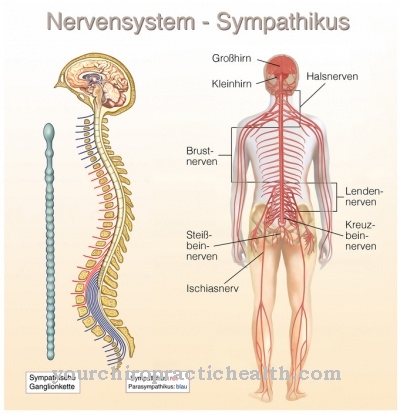The ultradian rhythm includes biological processes that repeat themselves one or more times within 24 hours. Your period is shorter than a full day and is very varied. The period length extends from a few milliseconds to several hours. The mechanism and function of the ultradian rhythm can also be extremely different.
What is the ultradian rhythm?

The ultradian rhythm occurs, for example, in physiological processes such as breathing, blood circulation, hormone production, sleep cycles, the beating of the heart and cell division. It can also be specifically measured in behavioral processes and people's eating habits.
In contrast to the ultradian rhythm, the period length of the circadian rhythm is one day and that of the infradian rhythm is one day.
Ultradian vibrations and other movements take place in all known biological systems and can be traced down to the level of cells and bacteria. A typical example are the leaf movements of the plants, which repeat themselves with regularity.
The daily routine of birds, which follows a fixed rhythm, can be observed very well. The cows in the pasture do not chew by chance either, but are encouraged to do so by a clock in their brain. Field mice, on the other hand, eat in very specific cycles that are controlled exclusively by the prevention of starvation.
The human pituitary gland releases its hormones in an absolutely fixed ultradian rhythm. This ultradian rhythm is controlled by various biochemical processes in the cells, which also take place cyclically. The biosynthesis of protein is an example of these processes, which run like clockwork. Often these rhythmic processes are even more or less independent of external temperature influences.
Function & task
One of the most interesting ultradian rhythms has a period length of about four hours and can be registered in babies as an example. Before they can sleep through the night, after around four hours they are hungry and wake up. Nothing can stop them from doing that. Adults, too, have generally divided their daily diet so that three to four hours pass between each meal.
In the ultradian rhythm, the alternation between the different sleep stages of humans also takes place. Here the period is usually 70 to 110 minutes. A healthy person therefore goes through four to seven sleep cycles per night, in which different deep and shallow forms of sleep alternate according to a certain pattern (REM-Non-REM sleep).
Depending on the stage of sleep, the electrical responsiveness of the brain varies very significantly. Body temperature and blood pressure are also in constant change over the sleep phases. According to this principle, everyone experiences regular ups and downs in their physical and mental performance even when they are awake during the bright times of the day. Here, for example, sleepiness around noon stands for the ultradian rhythm change.
You can find your medication here
➔ Medication for sleep disordersIllnesses & ailments
Studies have shown that mania and depression are in a two-day cycle in many people with bipolar disabilities. Similar relationships are suspected in patients with schizophrenia. In these cases, the release of the chemical dopamine is out of whack.
Under normal conditions, dopamine regulates a four-hour ultradian rhythm. The organism is used to this and has adjusted to it. However, if the dopamine rhythm generator gets mixed up, entire chains of reactions and physiological processes can suddenly change. The four-hour ultradian period then sometimes jumps to a rhythm of 48 hours, for example. The causes of these abrupt fluctuations can be minimal changes in the human genetic control mechanism.
Influences from the environment or from medication are often responsible for changes of this type. They are perceived by the dopamine-dependent rhythm generator of the body and converted into biochemical clock changes. These in turn affect a wide variety of psychological disorders, but also, for example, the usual sleep rhythm.
The temporal structuring and the resulting behavioral patterns of organisms are researched by chronobiology, a relatively young branch of science. She considers the circadian, one-day periodic rhythm to be the most important of human physiology. However, it is becoming increasingly clear that the short-term, ultradian rhythm is becoming more and more important, especially for human health.
Due to the rapidly increasing consumption of psychotropic drugs and the growing number of psychological impairments or illnesses, especially the ultradian rhythm is confronted with many difficulties. The lifestyle and the concept of life are developing increasingly diametrically to the so-called biological clock that is given to humans for their existence.
This clock is built from all three rhythms (ultra, circadian and infradian). The more a person neglects this, the greater his risk of disease. For example, the increased lack of light in many people has an extremely negative impact on healthy physiology.
Chronobiology also clearly points out that too many journeys across different time zones are detrimental to human biorhythms in the long run. If more and more regularity is lost in daily life, for example by neglecting normal eating and adequate sleeping times, the physical and psychological powers inevitably decrease.
























.jpg)



